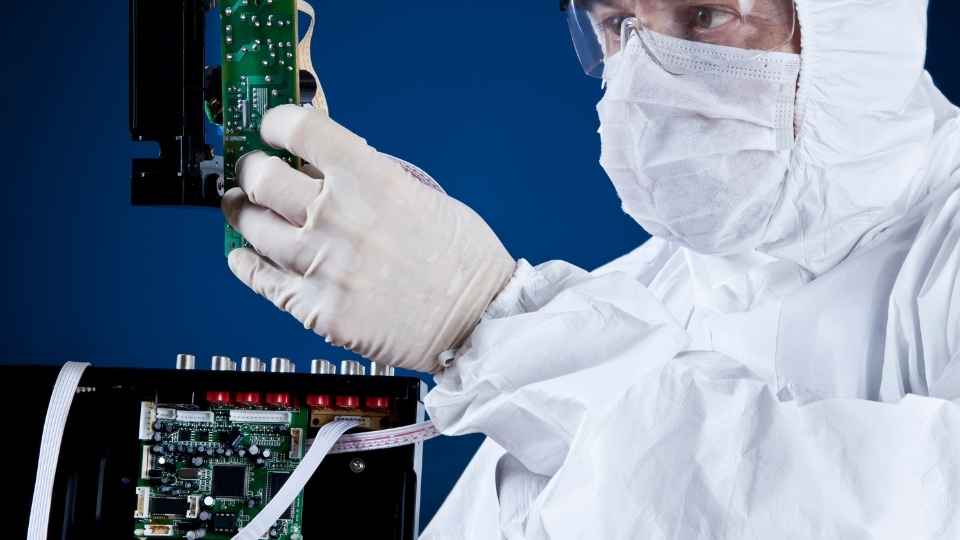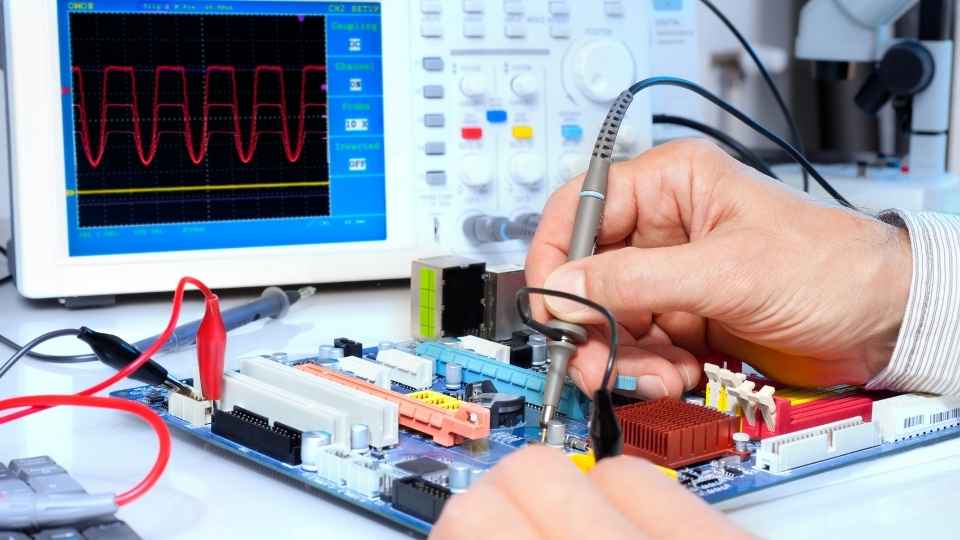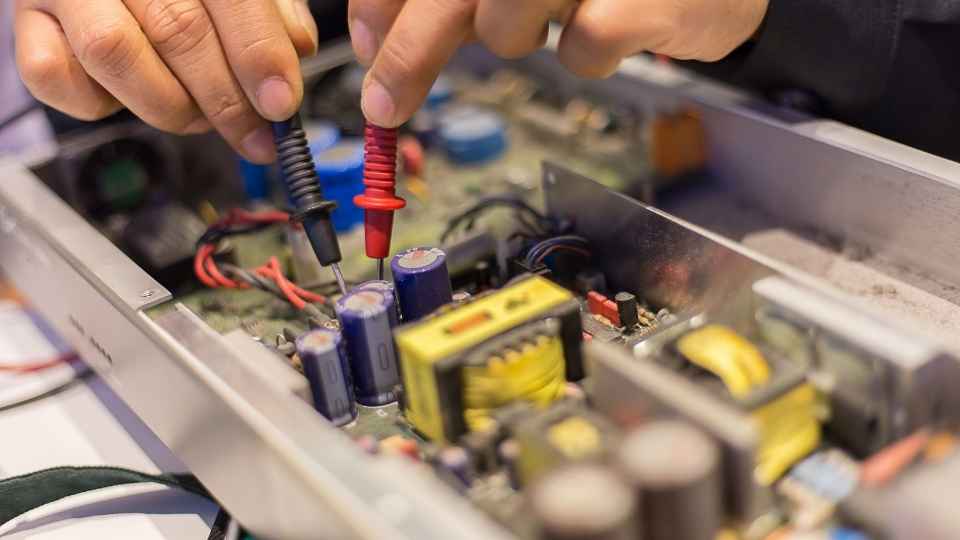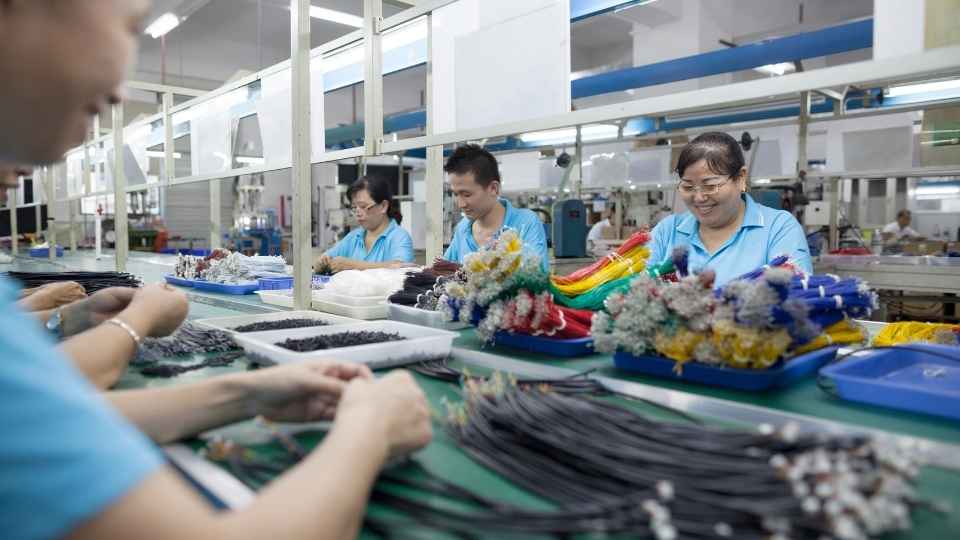
In today's interconnected world, where smart devices and Internet of Things (IoT) technologies are becoming increasingly prevalent, one cannot underestimate the power of microcontrollers. These tiny yet powerful electronic components serve as the backbone of our connected world, enabling seamless communication between devices and facilitating automation in various industries.
From smart homes to wearable technology, from industrial IoT systems to environmental monitoring, microcontrollers play a pivotal role in driving innovation and connectivity.
In this article, we will delve into the intricate workings of microcontrollers and explore how they empower our ever-evolving IoT landscape.
Key Takeaways
- Microcontrollers play a crucial role in powering smart home applications and wearable technology, providing processing power and control for automation and integration.
- They enable customization, automation, energy efficiency, and improved security in smart homes, while also optimizing power consumption and enhancing connectivity in wearable devices.
- Microcontrollers are essential for ensuring IoT security, implementing authentication and encryption protocols, and addressing vulnerabilities through regular updates.
- Wireless modules are key components in IoT systems, providing seamless connectivity, reliable communication, and scalability for connected devices, while also enabling enhanced device communication and connectivity in industrial IoT.
Smart Home Applications and the Role of Microcontrollers
Microcontrollers play a crucial role in powering smart home applications by providing the necessary processing power and control to enable seamless automation and integration of various devices and systems.
These tiny yet powerful devices are at the heart of smart home technology, allowing homeowners to remotely control and monitor their appliances, lighting, security systems, and more.
Microcontrollers act as the brain of these interconnected systems, executing commands based on user input or predefined schedules.
They enable communication between different components through protocols like Wi-Fi, Bluetooth, or Zigbee, ensuring smooth operation and interoperability.

With the ability to process data quickly and efficiently, microcontrollers make it possible for users to create customized settings, automate routine tasks, enhance energy efficiency, improve security measures, and create a truly connected living environment that offers freedom and convenience for homeowners.
The Impact of Microcontrollers on Wearable Technology
The integration of advanced technology into wearable devices has revolutionized the way we track and monitor our health and fitness. With the help of microcontrollers, these devices have become more powerful and versatile than ever before.
Here are five ways in which microcontrollers have impacted wearable technology:
Improved sensor data processing: Microcontrollers enable real-time processing of sensor data, allowing for more accurate and timely health monitoring.
Enhanced connectivity: Wearable devices equipped with microcontrollers can connect to smartphones, computers, and other devices, enabling seamless data transfer and analysis.
Longer battery life: Microcontrollers optimize power consumption, ensuring that wearable devices can operate for extended periods without needing frequent charging.
Smaller form factors: Microcontrollers are compact and lightweight, making it possible to create sleek and comfortable wearable designs.

Customizability: With programmable microcontrollers, developers can create customized features and functionalities tailored to individual user needs.
These advancements in wearable technology powered by microcontrollers have empowered individuals to take control of their health while enjoying the freedom of mobility.
Ensuring Iot Security With Microcontrollers
As the Internet of Things (IoT) continues to expand, ensuring the security of connected devices becomes increasingly crucial.
Microcontrollers play a significant role in safeguarding IoT systems by implementing various security measures.
This includes enabling secure data transmission, implementing authentication and encryption protocols, and integrating vulnerability prevention measures to protect against cyberattacks.
Secure Data Transmission
To ensure the integrity and confidentiality of data transmitted over IoT networks, implementing robust encryption protocols is essential. Encryption provides a secure mechanism for protecting sensitive information from unauthorized access or interception.
Here are five key considerations for secure data transmission in IoT networks:

- Implement strong encryption algorithms such as Advanced Encryption Standard (AES) to safeguard data.
- Use secure key management practices to ensure that encryption keys are properly generated, stored, and rotated.
- Authenticate devices and users before allowing data transmission to prevent unauthorized access.
- Employ secure communication protocols like Transport Layer Security (TLS) or Secure Sockets Layer (SSL) to establish encrypted connections between devices and servers.
- Regularly update the firmware and security patches on connected devices to address any vulnerabilities.
Authentication and Encryption
Implementing robust authentication and encryption protocols is crucial for ensuring the integrity and confidentiality of data transmitted over IoT networks.
In the era of interconnected devices, where billions of devices are exchanging data, it is essential to protect sensitive information from unauthorized access and tampering.
Authentication mechanisms verify the identity of devices or users before granting access to network resources, preventing malicious actors from infiltrating the system.
Encryption ensures that data remains confidential by converting it into an unreadable format that can only be decrypted by authorized recipients.
Vulnerability Prevention Measures
Vulnerability prevention measures play a crucial role in maintaining the security and integrity of data transmitted over interconnected networks. In today's connected world, where Internet of Things (IoT) devices and microcontrollers power our daily lives, it is imperative to implement robust measures to protect against potential vulnerabilities.
Here are five important steps that can be taken:
Regular software updates: Keeping the firmware and software up to date helps to address any known vulnerabilities.

Secure coding practices: Following best practices for writing secure code minimizes the chances of introducing vulnerabilities during development.
Network segmentation: Dividing a network into smaller segments with different levels of access control helps limit the impact of a potential breach.
Intrusion detection systems: Deploying IDSs can help detect any unauthorized access attempts or suspicious activities on the network.
User education and awareness: Educating users about safe online practices, such as strong passwords and avoiding phishing attacks, can significantly reduce the risk of falling victim to cyber threats.
Exploring the Integration of Microcontrollers and Cloud Services
The integration of microcontrollers and cloud services is a crucial aspect in understanding the power of IoT. Microcontrollers (MCUs) are small, low-power devices that are used to control various electronic systems. They play a vital role in connecting physical objects to the internet, enabling them to communicate with each other and with users.
Cloud services provide the necessary infrastructure for data storage, processing, and analysis in IoT applications. By integrating MCUs with cloud services, we can leverage the benefits of both technologies. MCUs collect data from sensors and actuators, process it locally, and then send it to the cloud for further analysis. This enables real-time monitoring and control of connected devices from anywhere at any time.
Additionally, cloud services offer scalability, reliability, and security features that are essential for managing large-scale IoT deployments. They allow seamless integration with other systems and enable advanced analytics capabilities such as machine learning.

Overall, the integration of microcontrollers and cloud services empowers IoT solutions by providing a robust foundation for data collection, storage, processing, and analysis. It enables remote management of connected devices while ensuring scalability and security for diverse applications in industries such as healthcare, transportation, agriculture, and more.
The Importance of Wireless Modules in IoT Systems
Wireless modules play a crucial role in IoT systems by providing seamless connectivity and enhancing device communication.
These modules enable devices to connect to the internet and communicate with each other wirelessly, allowing for real-time data exchange and remote control.
Seamless Connectivity for Iot
Achieving seamless connectivity for IoT devices is crucial in ensuring efficient and reliable data transmission between various interconnected devices. To achieve this, there are several key factors that need to be considered:
Network compatibility: Ensuring that IoT devices can connect to a wide range of networks, including Wi-Fi, cellular, and LPWAN, allows for flexibility and scalability.
Interoperability: Devices from different manufacturers should be able to communicate with each other seamlessly, regardless of the underlying technology or protocol used.
Security: Robust security measures must be implemented to protect sensitive data transmitted between IoT devices.

Scalability: The network infrastructure should have the capacity to handle an increasing number of connected devices as the IoT ecosystem expands.
Reliability: Reliable connectivity ensures uninterrupted data transmission and minimizes downtime.
Enhanced Device Communication
Enhanced device communication plays a crucial role in optimizing the functionality and performance of interconnected devices within the IoT ecosystem. In order for various devices to seamlessly communicate with each other, it is essential to have reliable and efficient communication protocols in place.
These protocols enable devices to share data, exchange commands, and coordinate their activities. MQTT (Message Queuing Telemetry Transport) is one such protocol that has gained significant popularity in the IoT industry due to its lightweight nature and ability to handle low-power devices. It allows for efficient data transmission over unreliable networks, making it ideal for resource-constrained devices.
Additionally, protocols like CoAP (Constrained Application Protocol) enable direct communication between IoT devices using UDP or SMS-based transports. Such enhanced device communication protocols empower users by providing them with freedom of choice when selecting and integrating different interconnected devices into their IoT systems.
Enhancing Connectivity With Microcontrollers in Industrial Iot
To improve connectivity in industrial IoT, microcontrollers play a crucial role by seamlessly integrating various sensors and actuators into a unified system. These small yet powerful devices provide the necessary processing power and intelligence to enable efficient communication and data exchange within an IoT network.
Here are five ways microcontrollers enhance connectivity in industrial IoT:

Protocol support: Microcontrollers support a wide range of communication protocols such as MQTT, CoAP, and Modbus, allowing easy interoperability between different devices.
Wireless capabilities: With built-in Wi-Fi, Bluetooth, or cellular modules, microcontrollers enable wireless connectivity for remote monitoring and control of industrial devices.
Edge computing: Microcontrollers can process data locally at the edge of the network, reducing latency and enabling real-time decision-making without relying solely on cloud services.
Security features: Many microcontrollers have built-in security mechanisms like encryption and authentication protocols to protect sensitive data from unauthorized access or tampering.
Scalability: Microcontroller-based systems can scale easily by adding more nodes to the network, providing flexibility for future expansions.
Overall, microcontrollers serve as the backbone of industrial IoT connectivity by enabling seamless integration, secure communication, and intelligent decision-making at the edge.
Microcontrollers: Enabling Smart Agriculture and Environmental Monitoring
In addition to revolutionizing industrial IoT, microcontrollers are also playing a crucial role in enabling smart agriculture and environmental monitoring.

These tiny yet powerful devices are being integrated into various agricultural systems to enhance efficiency and sustainability. Microcontrollers help automate tasks such as irrigation, fertilization, and pest control by collecting data from sensors and making real-time decisions based on predefined algorithms. This enables farmers to optimize resource usage, reduce costs, and increase crop yields.
Furthermore, microcontrollers are facilitating environmental monitoring by gathering data on parameters like air quality, water levels, and soil conditions. This information is then used to make informed decisions regarding conservation efforts and the protection of natural resources.
With microcontrollers powering these advancements in agriculture and environmental monitoring, we can expect significant improvements in productivity while ensuring sustainable practices for a better future.
Frequently Asked Questions
How Do Microcontrollers Contribute to the Development of Smart Homes and Their Applications?
Microcontrollers play a crucial role in the development of smart homes and their applications. By providing the necessary processing power and connectivity, they enable devices to communicate, automate tasks, and enhance overall efficiency and convenience within the home environment.
What Is the Significance of Microcontrollers in Wearable Technology and How Do They Impact the Functionality of These Devices?
Microcontrollers play a significant role in wearable technology as they enable the functionality of these devices. They provide the necessary processing power and control to perform tasks such as collecting data, analyzing it, and communicating with other devices or networks.
Can Microcontrollers Effectively Ensure the Security of Iot Systems and Protect Against Potential Vulnerabilities?
Microcontrollers play a crucial role in ensuring the security of IoT systems and protecting against potential vulnerabilities. Their ability to manage data, authenticate devices, and implement encryption protocols contributes to safeguarding connected devices and networks from cyber threats.
How Are Microcontrollers Integrated With Cloud Services to Enhance the Functionality of Iot Devices?
Microcontrollers are integrated with cloud services to enhance the functionality of IoT devices by allowing them to connect, store and process data in real-time. This integration enables remote access, scalability, and advanced analytics for improved performance and user experience.

What Role Do Wireless Modules Play in Iot Systems and How Do Microcontrollers Enhance Connectivity in Industrial Iot Applications?
Wireless modules play a crucial role in IoT systems by enabling seamless connectivity between devices. Microcontrollers enhance connectivity in industrial IoT applications by providing the necessary processing power and communication protocols to transmit and receive data efficiently.
 Basic Electronics ConceptsEssential ToolsCircuit Design BasicsMicrocontrollersDIY Electronics ProjectsRoboticsPrivacy PolicyTerms And Conditions
Basic Electronics ConceptsEssential ToolsCircuit Design BasicsMicrocontrollersDIY Electronics ProjectsRoboticsPrivacy PolicyTerms And Conditions
